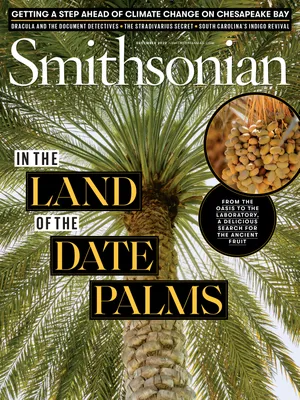The Biggest Fails in License Plate History
While vintage plates have grown popular, these older iterations show where officials got it wrong
:focal(500x338:501x339)/https://tf-cmsv2-smithsonianmag-media.s3.amazonaws.com/filer_public/55/59/55590489-f362-47ec-b8c3-7ec12bfc7da8/idaho_liscense_plate.jpg)
In 2015, California reintroduced its yellow-and-black “legacy license plates,” available for a small fee, which hadn’t been issued since 1970; they quickly became the most frequently issued specialty design in the state, generating money for environmental causes. Now, Michigan and New Jersey have followed suit, and legislators in Colorado are debating whether to revive that state’s vintage motifs. But there is such a thing as going too far, as these examples suggest.
The One that Got Away – Massachusetts 1928-29
/https://tf-cmsv2-smithsonianmag-media.s3.amazonaws.com/filer_public/77/ae/77ae668b-1192-4917-ba5a-fb3f17f021cf/mass_liscense_plate.jpg)
Escape from the Bronx Zoo – Alaska 1976-1981
/https://tf-cmsv2-smithsonianmag-media.s3.amazonaws.com/filer_public/e0/4b/e04bc7cb-3944-4f14-82c1-bf96a07cda8b/alaska_liscense_plate.jpg)
Bombs Away – Florida 1935
/https://tf-cmsv2-smithsonianmag-media.s3.amazonaws.com/filer_public/a5/02/a502698c-e5a4-4075-8213-c54827a9f3fc/florida_liscense_plate.jpg)
Whose Freedom? New Hampshire 1971-present
/https://tf-cmsv2-smithsonianmag-media.s3.amazonaws.com/filer_public/fb/3d/fb3d4113-4be8-4b0c-8f6e-5b0561c48cb4/new_hamshire_liscense_plate.jpg)
Air Grievance – North Carolina and Ohio 1998-present
/https://tf-cmsv2-smithsonianmag-media.s3.amazonaws.com/filer_public/9c/40/9c4004e0-63ba-490a-9b5f-d8ed14c63ed3/ohio_north_carolina.jpg)
Native Sun – New Mexico 1932-1949
/https://tf-cmsv2-smithsonianmag-media.s3.amazonaws.com/filer_public/9f/43/9f439626-5299-41ba-af87-7a5905d6d57e/fla_arizona.jpg)
Tuber, or Not Tuber – Idaho 1928
:focal(500x338:501x339)/https://tf-cmsv2-smithsonianmag-media.s3.amazonaws.com/filer_public/55/59/55590489-f362-47ec-b8c3-7ec12bfc7da8/idaho_liscense_plate.jpg)
